Empanada de atún: Galician tuna pie
Empanada de atún is a traditional pie from Galicia, up in Spain’s north west corner, where I’ve enjoyed it many times. Filled with tinned tuna, onions, peppers, olives and hard-boiled eggs in a tomato sauce, the simple ingredients nevertheless create a pie that’s incredibly good.
Best eaten cold, a generous hunk of empanada is perfect for picnics and lunch boxes. Can also be served as summery main course with salad.
Disclosure: this post may contain affiliate links. If you buy via my links, I may earn a small commission at no extra cost to you.
Jump to Recipe
From the very first time I went to Spain (Barcelona, back in 1997), I fell in love with the place. Over the years, I’ve visited most of its major cities plus countless towns and villages. We’ve toured almost all over, often driving most of the day to visit a clutch of architectural gems.
I especially loved finding incredible churches in once important places, but now seemingly in the middle of nowhere. Often beautifully restored, many seemed of little interest to anyone except us and the storks nesting on their bell towers.
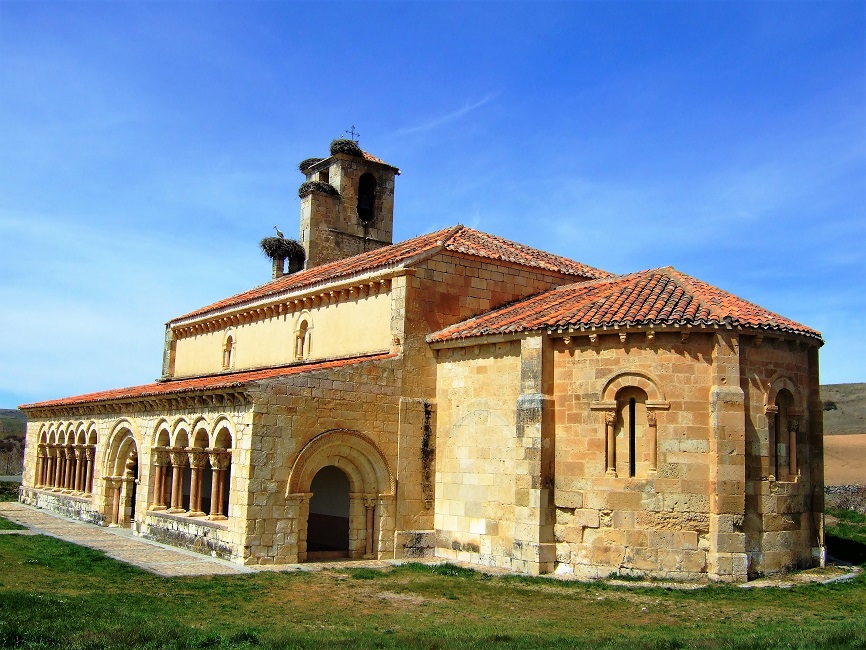
But the region we’ve returned to the most is Galicia. We even considered moving there, although that turned out not to be.
GALICIA
Part of northern ‘Green Spain’, Galicia doesn’t have the reliably dry Summers of much of the country.
This has meant that it hadn’t experienced the mass tourism of some other Spanish regions
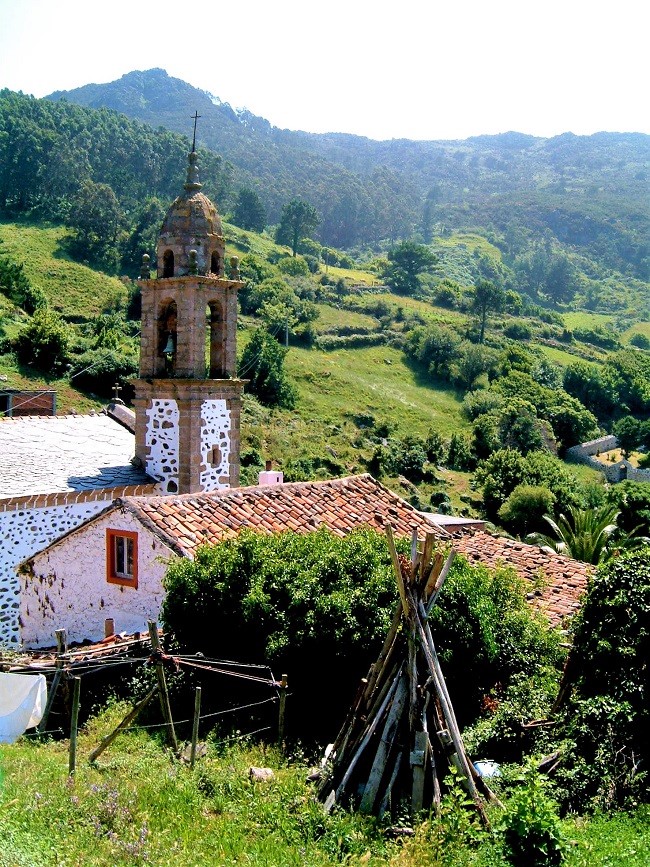
The one thing in Galicia you perhaps will have heard of is the magnificent Cathedral of Santiago de Compostela, destination for pilgrims following the world famous Camino de Santiago.
But for those who think Spain is otherwise all about flamenco and bullfights, Galicia is a great example of the country’s diversity. With its own language, gallego, Galicia has its roots in a Celtic past: the traditional instrument here is the gaita or bagpipes, not the Spanish guitar.
Even more than the rest of Spain, Galicia seems to have retained its connection to pre-Christian beliefs. There’s much interest in magic, spirits and witchcraft, including among Catholics. I even found what appears to be a spell while walking above the town of Muxía in 2007.
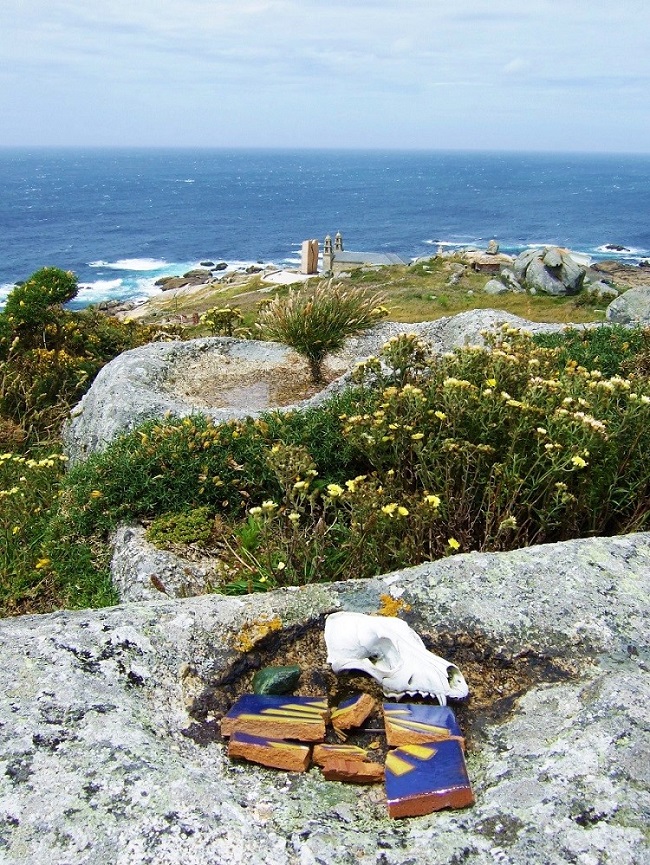
I guess that’s a dog’s skull in the burnt rock crevice, and the blue and yellow smashed plaque is one of those marking the Camino de Santiago. Perhaps someone wasn’t too enamoured of all those pilgrims?
GALICIAN FOOD
Of course, the region has its own food specialities and customs too. It’s particularly known for the quality of its beef, Tetilla cheese (so named as it’s said to look like a small breast) and Tarte de Santiago: an almond cake decorated with the cross of St. James or his symbol, the scallop shell.
Alongside agriculture, fishing was traditionally Galicia’s most important economic activity.
I’ve had some of the best seafood ever while holidaying there, including zamburiñas (tiny sweet-tasting scallops), pulpo (tender octopus with smoked paprika and olive oil) and sweet mussels from Illa de Arousa where we’ve often stayed.
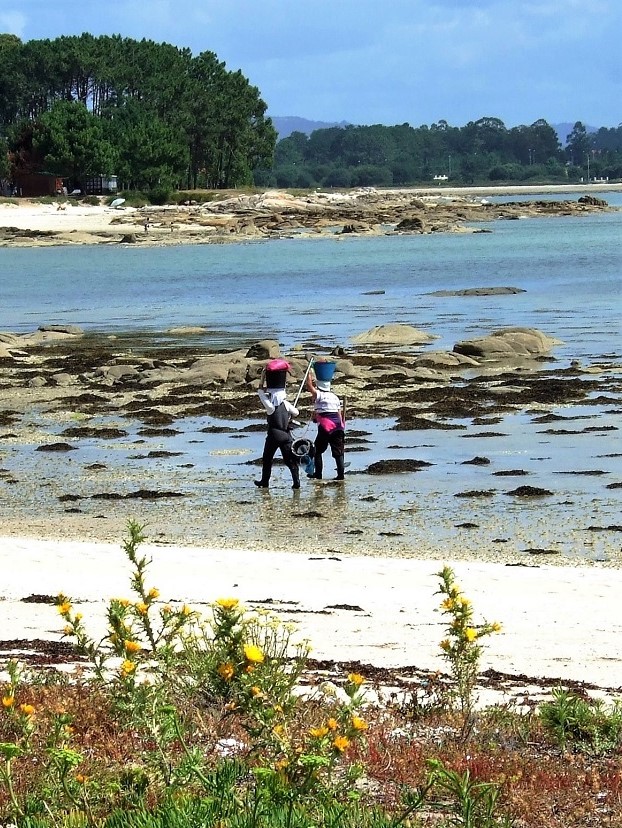
If we were going to pick up food for a picnic, to take with us on a walk or one of our drives, we’d often include a big slice of empanada, another Galician speciality.
These sturdy pies can contain meat such as chicken or chorizo, but more common are seafood fillings like sardines, tuna, salt cod or cockles with tomatoes, onions and peppers.
Back home, especially since getting a dog and now taking all our holidays in Britain, I’ve always meant to make my own empanada.
But it was only when flicking through my recently bought copy of Claudia Roden’s The Food of Spain (+ Kindle version available here) that I finally got around to it.
CLAUDIA RODEN’S EMPANADA DE ATÚN
Roden says that the recipe was given to her by Angelita Garcia de Paredes Barreda. She agreed that she would not make changes to it without asking Angelita first.
Well, I did make a few very minor changes. I can only hope Angelita will forgive me.
Mind you, I didn’t feel the need to veer much off course. It’s an excellent recipe, producing a pie that took me right back to Galicia. There’s no fancy ingredients, just simple flavours that marry beautifully.
Admittedly, the Empanada de Atún does take a while from start to finish. But that’s because there’s a fair bit of hands-off time. It certainly isn’t difficult.
THE DOUGH
The dough includes olive oil, egg and, unusually, white wine. We’d opened a bottle the night before I made this one, so thought I might as well keep back the 125 ml needed. But you can use cider instead if that suits you better.
Making the dough is simple enough. You start by whisking with a fork and, as you gradually add the flour, switch to your hands to form a soft dough. It’s then rested for an hour at room temperature. However, my kitchen was quite hot that day, so I stuck the dough in the fridge for a bit then brought it back to room temperature before continuing.
I did find rolling out the stretchy dough a little tricky. In fact, I found it impossible to follow the instruction not to stretch it when placing in the baking tin.
My effort didn’t look very tidy, and I wondered whether the dough would hold. But it turned out way better than fine, so don’t worry if you have similar difficulties.
One thing I will say though, is that the loose-bottomed baking tin I used, 24 centimetres in diameter, was smaller than the suggested 28 centimetres. This meant my finished pastry was a little thicker than I’d like, although still very good.
Ideally though, I’d make it in a slightly bigger tin.
THE FILLING
The tasty filling for the Empanada de Atún is very easy. You start off by softening onions and red pepper in olive oil. Not liking waste, I used some of the oil I drained from the tins of tuna. Diverting from the recipe, I decided to include a couple of cloves of chopped garlic too.
Once the vegetables are soft, a tin of chopped tomatoes is added along with some seasoning.
After everything’s nicely reduced and thick, off the heat you mix in the tuna, two chopped hard-boiled eggs plus olives. The original recipe calls for black olives, but I used a mixture of black and green.
COOKING THE EMPANADA
The empanada is cooked in two stages. First off, the bottom layer of dough is given an initial baking of ten minutes. After cooling, the filling is spread over and the top layer of dough added. I admit I was a little sceptical about this. Would the raw top layer stick to the part-baked lower layer?
Hedging my bets, I dampened the edge of the dough with water before pressing the lid on. Whether that made a different or not, I don’t know. But the lid stayed on fine anyway.
After an egg yolk wash to get a nice glaze, it was into the oven where the Empanada de Atún took around 35 minutes to cook.
SERVING, EATING & STORING EMPANADA DE ATÚN
I managed to restrain myself and let the pie settle and cool a little before slicing open. A little wary as to whether the filling would squidge out as I cut through, I was extremely happy to find it held together wonderfully well.
This was despite the tuna, vegetables and eggs still being nicely moist. Next day, we even took slices, wrapped in foil in the back of my rucksack, for a snack on one of our walks. And still they remained intact.
Despite being someone who usually insists on butter in my pastry, I loved this wine and olive oil dough. Sturdy enough to be satisfying and hold everything together, but not at all heavy, the simple yet tasty filling still shone through.
Between the two of us, we ate the pie over four days. Stored in a tin in the fridge, lined with kitchen paper, I think the last slices were just as good as those first bites.
Most we ate cold, some I pinged in the microwave for a minute or two just as an experiment. I’m not sure warming the Empanada de Atún improves it much, if at all, but if you prefer it that way it won’t do any harm so long as you don’t overdo it. Personally, I think room temperature is best though.
Whether you’ve tried Empanada de Atún in its Galician homeland or whether its new to you, I think you’ll enjoy this recipe.
With simple, easily available ingredients, this wonderful pie is perfect for your Summer picnics, in lunch boxes, or to eat as a main course with lots of salad.
If you’ve made this recipe, why not leave a comment below?

Empanada de atún: Galician tuna pie
A traditional pie from Galicia in north west Spain, best eaten cold.
With tinned tuna, onions, peppers, tomatoes, olives & eggs, it's perfect for picnics & lunch boxes.
Ingredients
For the dough
- 2 eggs
- 1 tsp baking powder
- 125 ml olive oil plus extra for greasing the tin
- 125 ml dry white wine or dry cider
- 0.5 tsp salt
- 375 g plain flour
For the filling
- 300 g tuna in olive oil approx 2 standard tins after draining (reserve 2 tbsp of the oil for frying)
- 1 large onion skinned, roughly chopped
- 1 red pepper chopped small
- 2 cloves garlic finely chopped
- 400 g tinned chopped tomatoes
- 1 tsp sugar
- salt to taste
- freshly ground black pepper to taste
- 2 hard-boiled eggs roughly chopped
- 20 pitted olives (black, green or a mixture) roughly chopped
Instructions
Dough
-
Crack ONE of the eggs into a large bowl and lightly beat with a fork.
-
Add the baking powder, oil, wine and salt and beat these in too.
-
Gradually add the flour, first mixing in with the fork then using your hands to make a soft ball of dough.
Wrap in foil or cling film and set aside at room temperature for 1 hour.
If the room is particularly warm you may wish to rest in the fridge for a while & bring back to room temperature before using.
Make the filling while the dough is resting.
Filling
-
Put the 2 tablespoons of oil you reserved from the tins of tuna into a large frying pan and put over a low heat.
-
When the oil is hot, stir in the onions, pepper and garlic and gently cook until soft (15-20 min).
-
Stir in the tomatoes (rinse out the tin with a little water and add that too), add sugar, salt and pepper then turn up the heat to moderate.
Bubble the sauce until it's thick with no loose liquid (approx 15 min).
-
Take off the heat then stir in the tuna, chopped eggs and olives.
Taste and add more salt and pepper if needed.
Set aside to cool a little.
Making the empanada
-
Use a little olive oil to grease a tin 24-28cm in diameter.
Preheat the oven to 180C / 160 Fan / Gas 4
-
Take the remaining egg and separate the white and yolk.
Lightly beat the egg white with a fork.
-
Divide the dough in two: make one a little larger than the other. Re-wrap the smaller piece.
-
Take the larger piece of dough, roll it out thinly and place it in the tin so it covers the bottom and sides.
If the dough sticks to your worksurface or rolling pin, drizzle a little olive oil over the worksurface rather than dusting with flour.
-
Prick all over the base of the dough with a fork then brush with the beaten egg white.
Bake in the oven for 10 minutes then set aside to cool a little.
Leave the oven on at the same temperature.
-
Spread the tuna filling evenly over the base then dampen the edges of the dough with a little water.
-
Roll out the remaining piece of dough to fit on top of the pie base.
Lay it on and press down all around.
-
Stir half a teaspoon of cold water into the egg yolk then brush the glaze all over the top of the pie.
Take a knife and make a small slit in the middle of the pie top
-
Bake in the oven until the pie is golden brown (35-40 min)
-
Leave to cool and serve cut into wedges.
Recipe Notes
The empanada should keep 4 days in the fridge.
Based on a recipe in The Food of Spain by Claudia Roden.
MORE RECIPES TO TRY

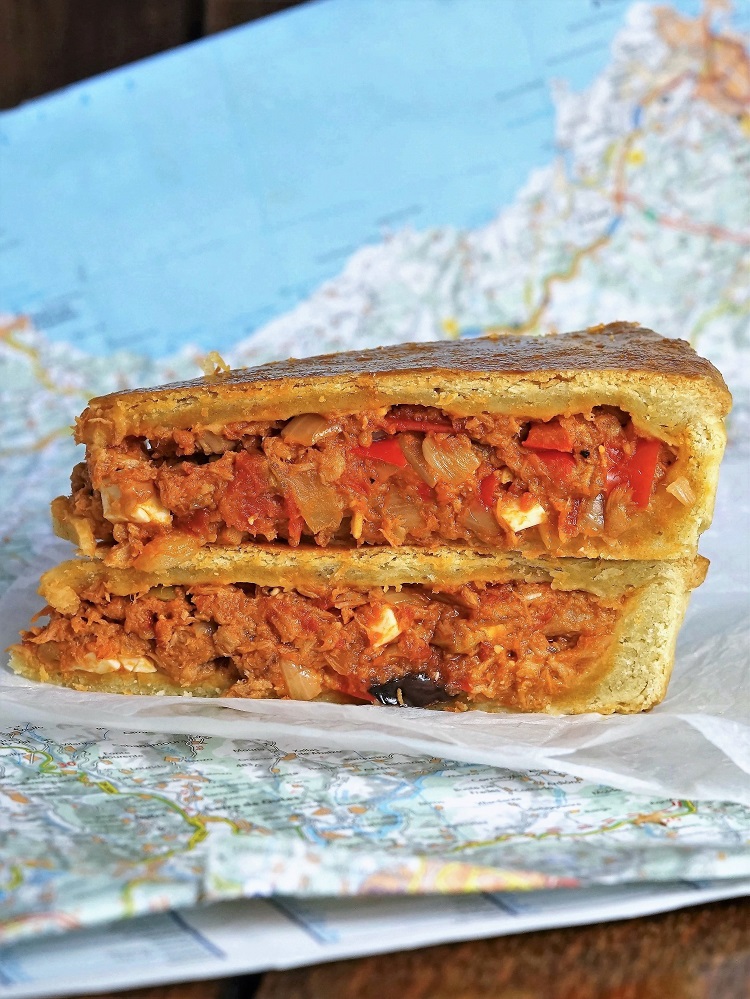
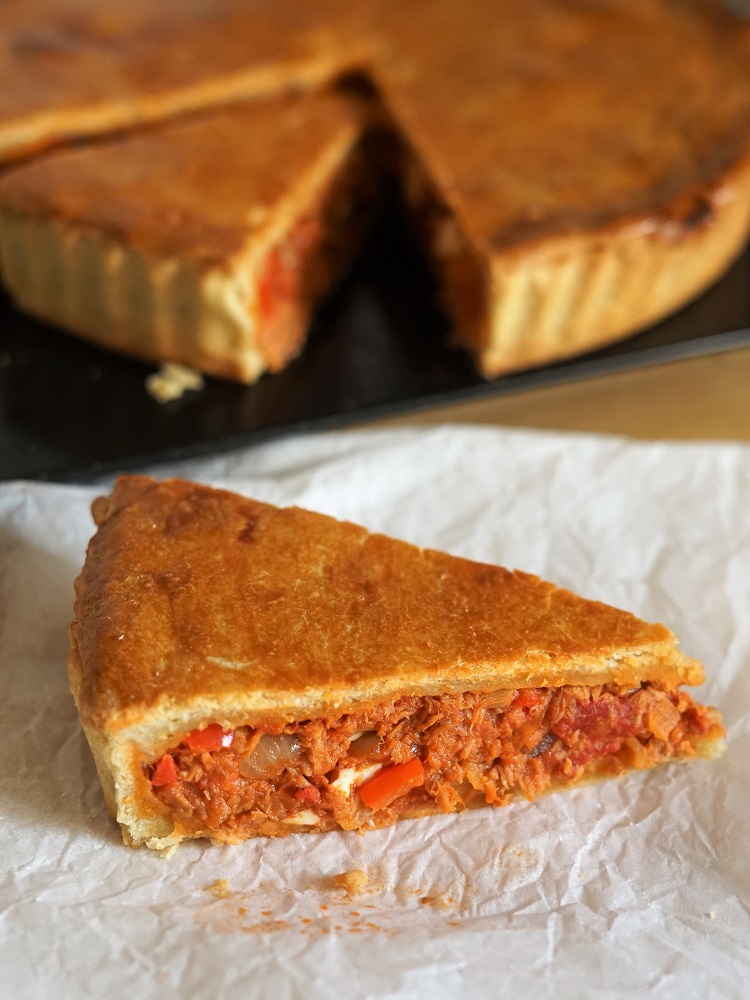
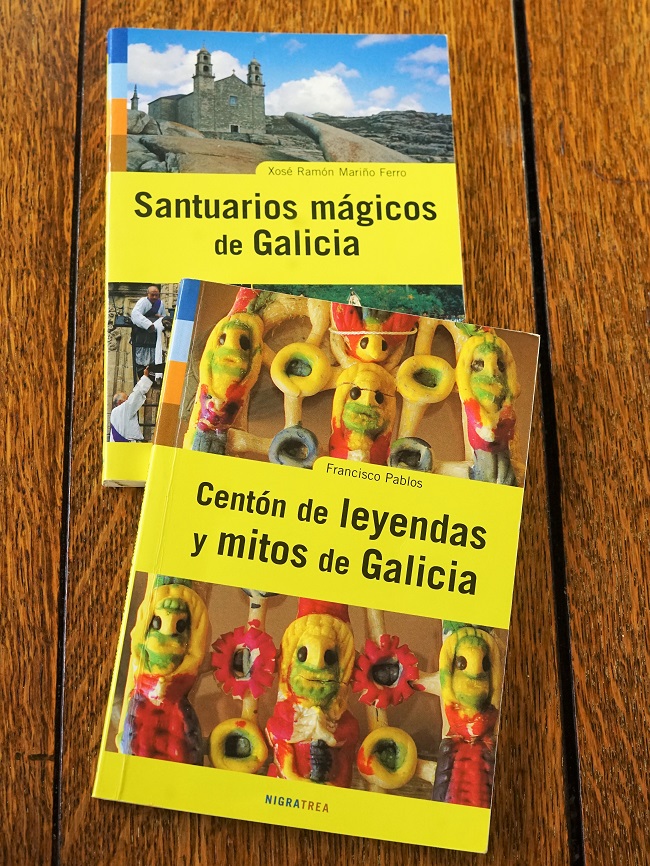
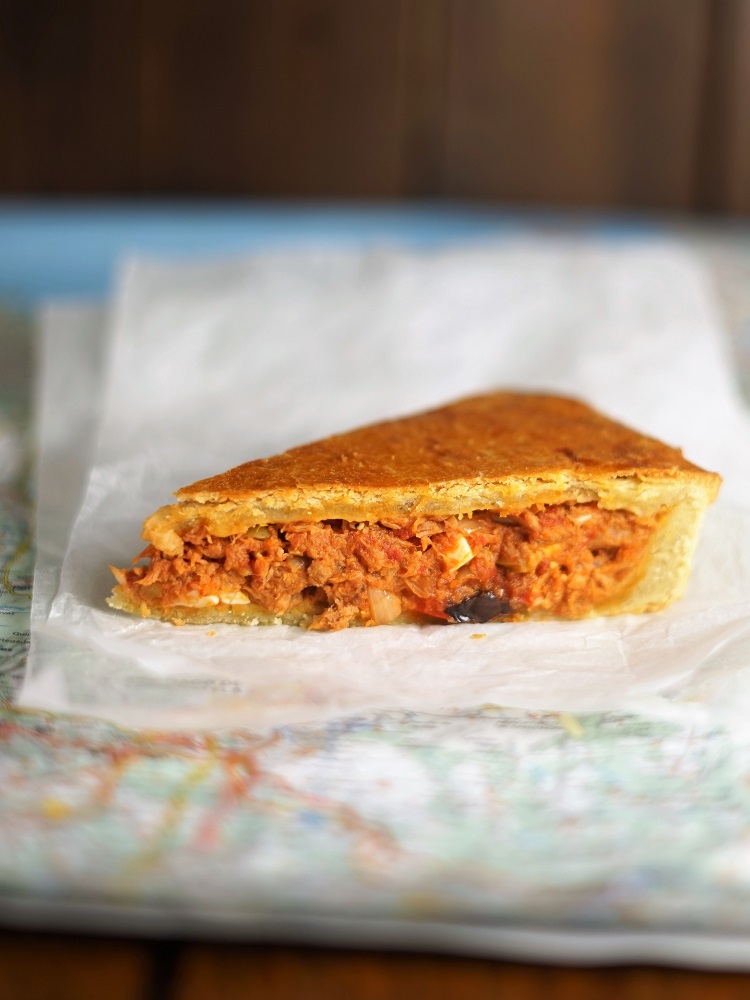
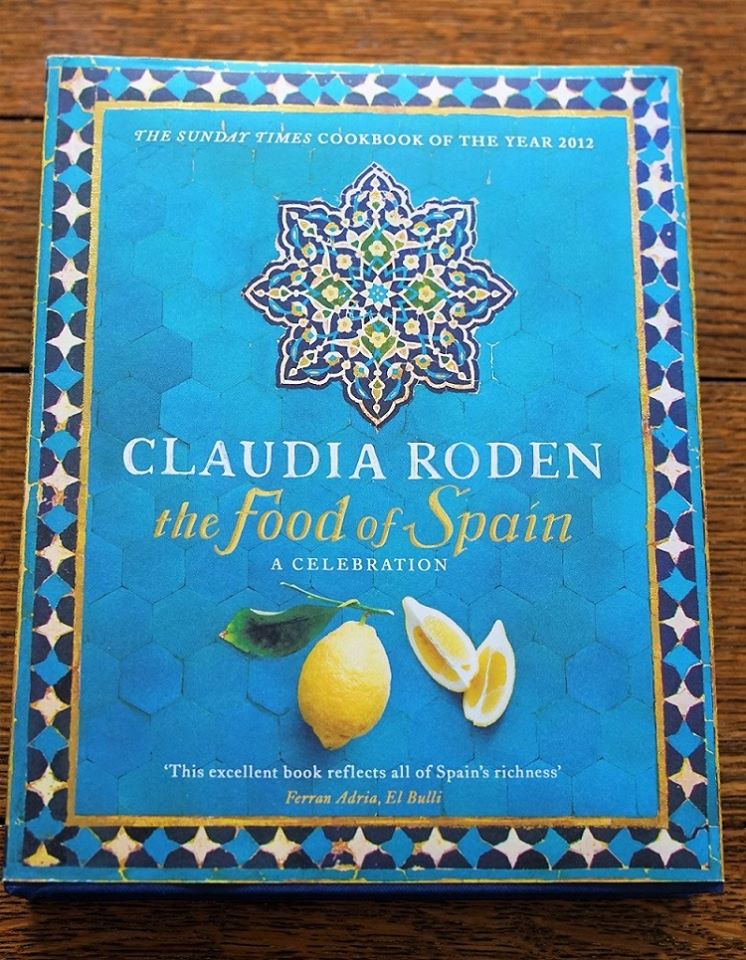
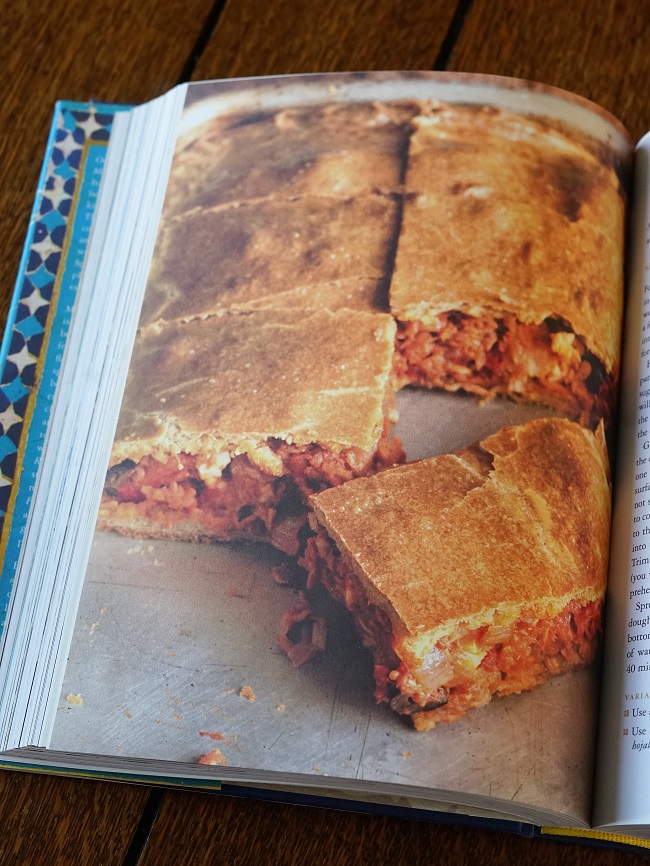
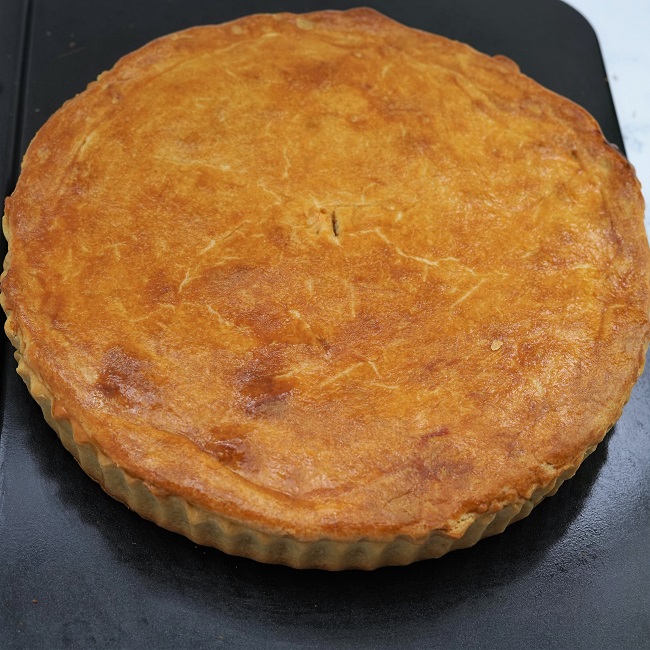
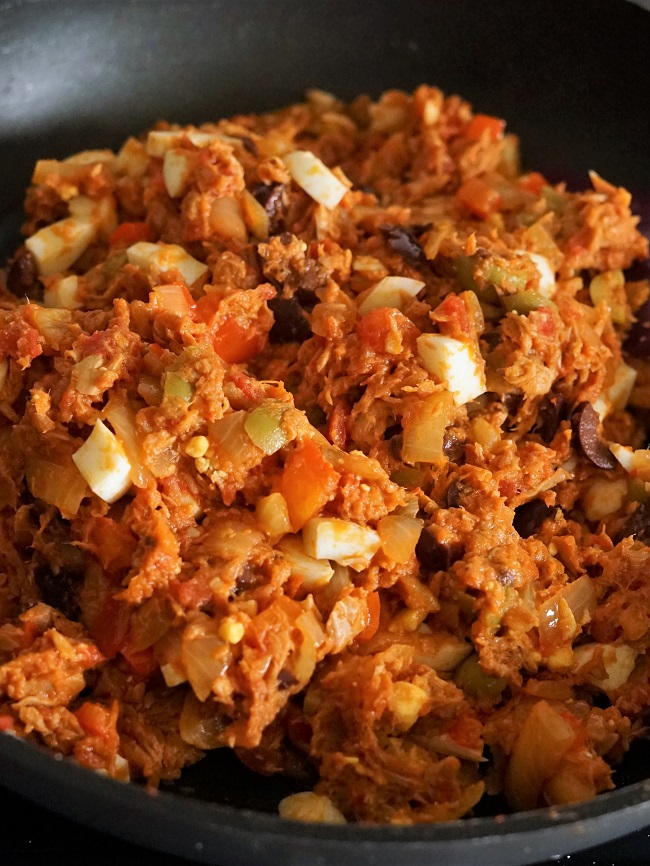

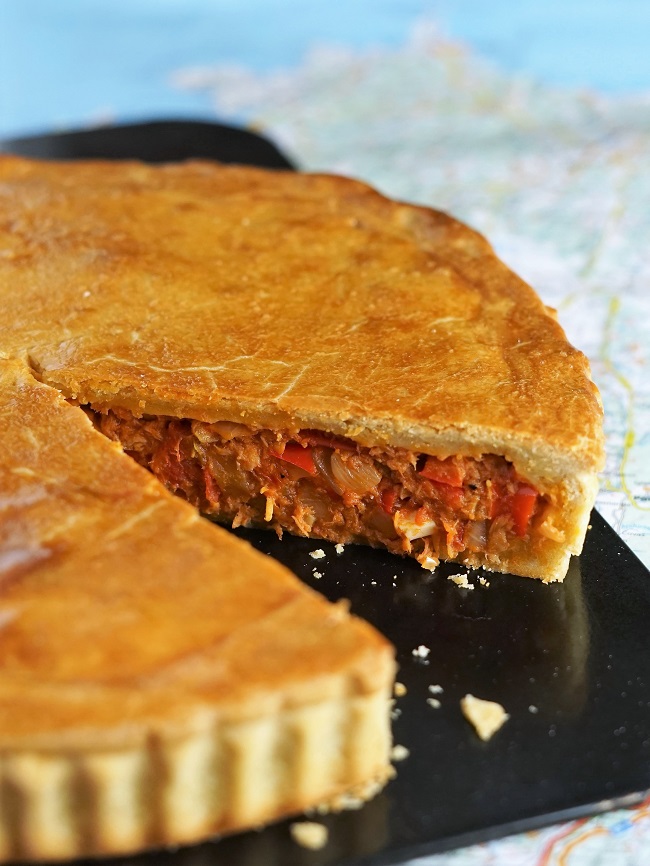

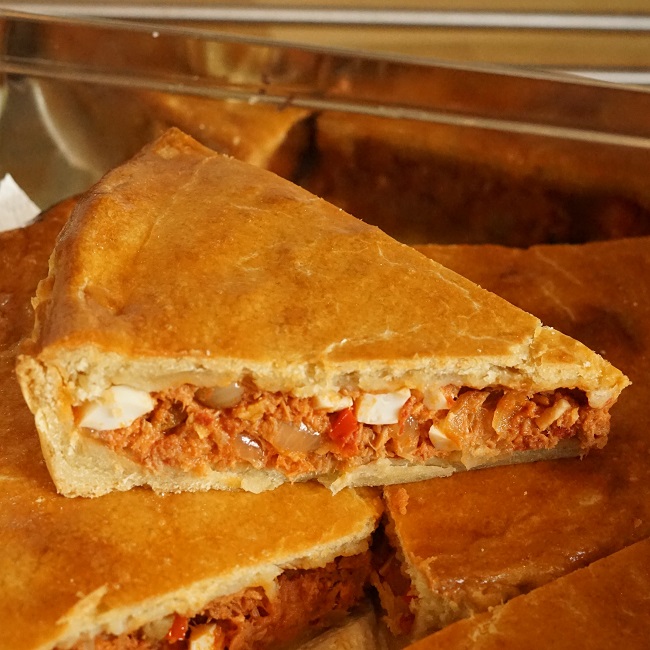
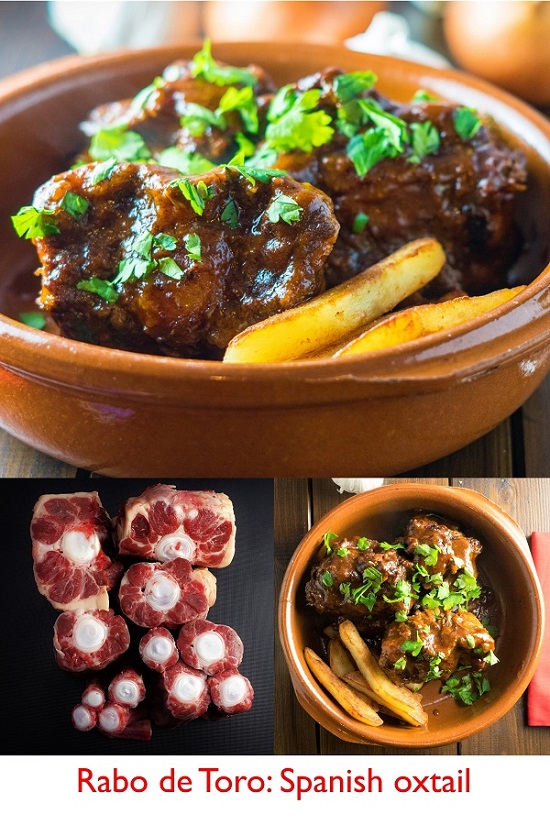



Hi Lynne,
Just found your website whilst searching for a tuna empanada recipe. having just spent a fantastic 3 weeks in Spain. The recipe worked a treat & the pastry with the addition of cider was brilliant. I also added cumin & sweet smoked paprika to the filling. Cheers me ducks.
Glad you enjoyed it and I love the sound of your additions!